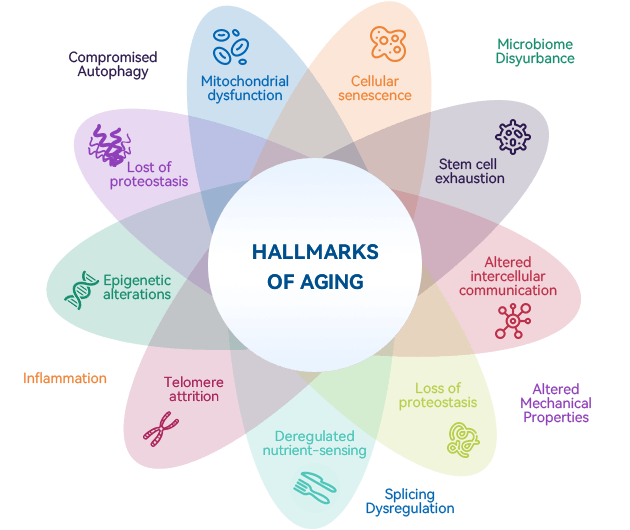NAD+: The Fountain of Youth
Discovered in 1904 by British biochemist Sir Arthur Harden in Saccharomyces cerevisiae, NAD+ was initially recognized as a coenzyme in redox reactions before its signaling molecule role was identified. NAD+ is intricately linked to all aging hallmarks and its levels in human tissues diminish with age.
NAD+ is vital for cellular metabolism and homeostasis and plays a critical role in regulating the aging process. Numerous preclinical studies have shown that declining NAD+ levels contribute to increased disease susceptibility and aging.
Conversely, administering NAD+ precursors (like NMN, NR, NA, NAM) in model animals has shown improved health and extended lifespan. Restoring NAD+ levels is thus seen as a promising anti-aging intervention, potentially mimicking the effects of calorie restriction, a recognized anti-aging method.




